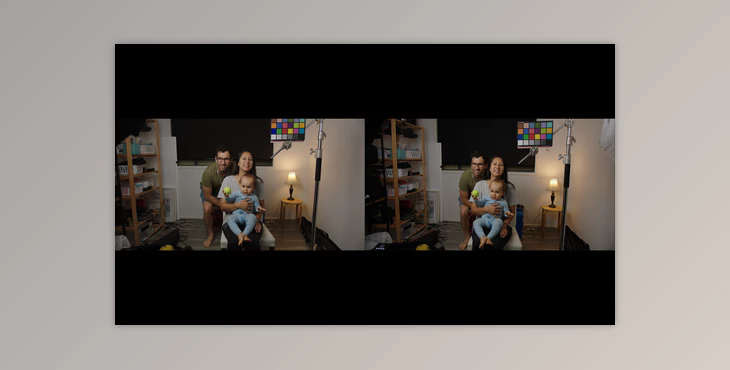
Phantom Luts – Canon: this is for Canon users looking for more options in their workflows for post-production or are not satisfied with the typical Canon Technical LUTs on offer. I've created an LUT accurately modeled after Clog2 and 3's Arri Alexa 709 color science for Clog2 and 3.
How to change the color and light of movies in Luts?
You can use "Phantom Luts - Canon".
Where can I download the product?
After subscription, You can download it for free from here.
Along with the Emulation LUT And the emulation LUT, there are four different LUTs with creative variations in the form of a five-pack of Arri LUTs.
For those of you who have a fondness for the past, I've created six film emulator LUTs that emulate films that were used in olden times.
The product is in the LUTS category, for more information about this post you can click on the home page link in the sidebar.
To search for similar products to Phantom Luts – Canon,
All LUTs are compatible with C-Log2 as well as C-Log3 versions.
These LUTs are extremely easy to use and can help your LOG footage reach the most attractive base to grade.
The "Film Look" LUT Pack includes six LUTs that are influenced by authentic film stocks that were that are designed to give your CLog2/3 footage an authentic Film Look. The emulations were based on my research and impressions of the listed films.
LUT 1) 'Vision' - Modelled on Kodak Vision 5274
LUT 2) 'Eastman' -Modelled on Kodak Eastman 5247
LUT3) 'Eastman RM' -Variation on Kodak Eastman 5247 (Introduced Jan 2022)
LUT 4) 'Vision Teal' - Variation on Kodak Vision 5274 (LUT# 1)
LUT 5) 'Eterna' -Modelled on Fuji Eterna 8563
LUT 6) 'Bleach' -Modelled on Fujifilm Super F 8552
Settings:
1) Recommended Camera Settings:
These are calibrated to work with Clog2 and Clog3 + Cinema Gamut (there are versions for both Clog 2 & 3).
The LUTs were built off of the C300 iii and C70 sensor color response but one of the great things about Canon is how closely their different sensors match across multiple cameras so these will work well with any Canon camera that shoots Clog2 or Clog3
2) White Balance & Camera Matching
In terms of White Balance, if you’re a solo shooter I recommend ‘Preset Shooting’, and if you’re matching two or more cameras, I recommend Custom White Balancing to make matching easier in post.
What’s Preset Shooting and Why Do It?
By Preset Shooting, I mean for simplicity and speed's sake I typically use the 3 presets below to get me ‘in the ballpark’ for post-production (where I can tweak the WB if need be in color correction before the LUT is applied).
● Daylight Exteriors: 5500k
● Daylight Interiors: 5000k
● Nightime Interiors/Exteriors - 4300k
These aren’t hard and fast rules, they’re just rules of thumb - feel free to experiment and set your white balance any way you like but these 3 presets will usually save you time on set and in post. In terms of Tint, I usually leave it at zero but it’s up to you and your tastes and the particular tint characteristics of your camera’s sensor. Again this is not a technique to make the LUTs work better - it’s merely a piece of advice from one Cinematographer to another which you can feel free to disregard.
Multi-Cam Shooting (2 or more cameras)
While Preset Shooting is advised for single-camera shoots, for multi-cam shoots, Custom White Balancing is much preferable. It’s important to realize (as stated above) that every single CMOS sensor is different and in fact, can see white differently. As an example, if you were to get two cameras of any brand (or even sometimes the same brand) and shoot a scene with both at 5500k, you shouldn’t necessarily expect both images to turn out the same in terms of white balance. This is because the sensors are not perfect instruments and are not all tuned to perfection - this is not just the case for a Canon Cinema Camera, it’s even true for an Arri Alexa.
So my best advice is to bring a gray card or color chart with a grayscale along on your shoot and make sure for each setup, you get a shot of the gray card on each camera you’re trying to match in post. If you get that part right, it’s just a matter of zeroing each camera’s white balance using the gray card as a reference in a post.
You just need to ensure that:
What is Phantom Luts – Canon?
Phantom LUTs is a company that creates and sells LUTs (Look-Up Tables) for color grading and color correction in video and photo editing. LUTs are used to apply specific color and tone adjustments to footage or images to achieve desired visual effects or styles. These LUTs are often used by video editors and colorists to give their projects a distinct look.
"Phantom LUTs for Canon" likely refers to a collection of LUTs specifically designed for use with Canon cameras. These LUTs are tailored to work well with Canon's color profiles and are often used by filmmakers, videographers, and photographers who shoot with Canon cameras.
LUTs can help achieve various creative effects, from cinematic looks to specific color grading styles.